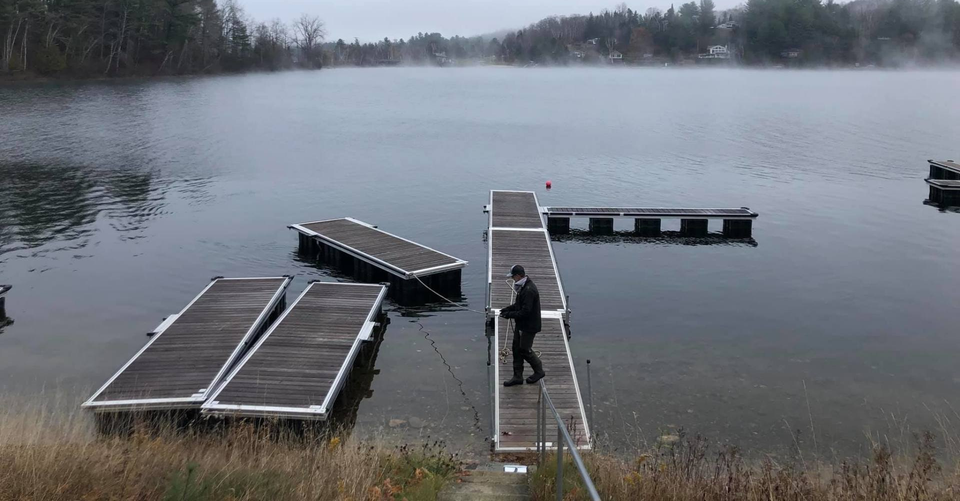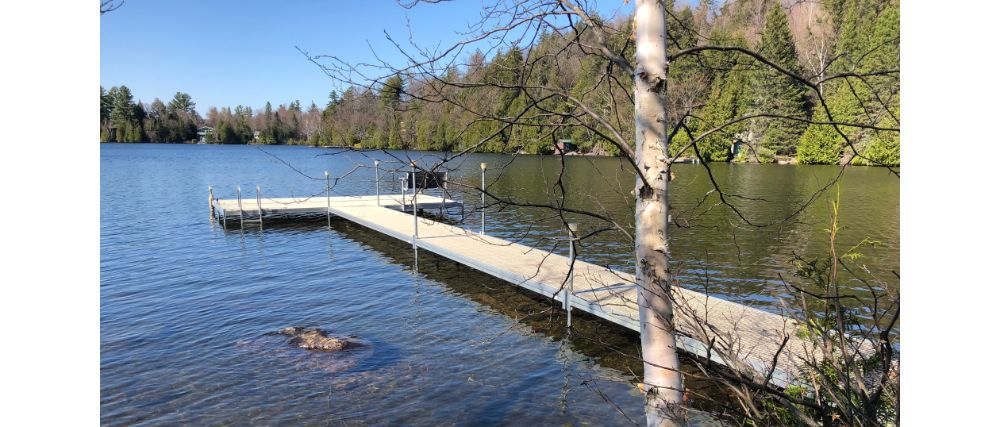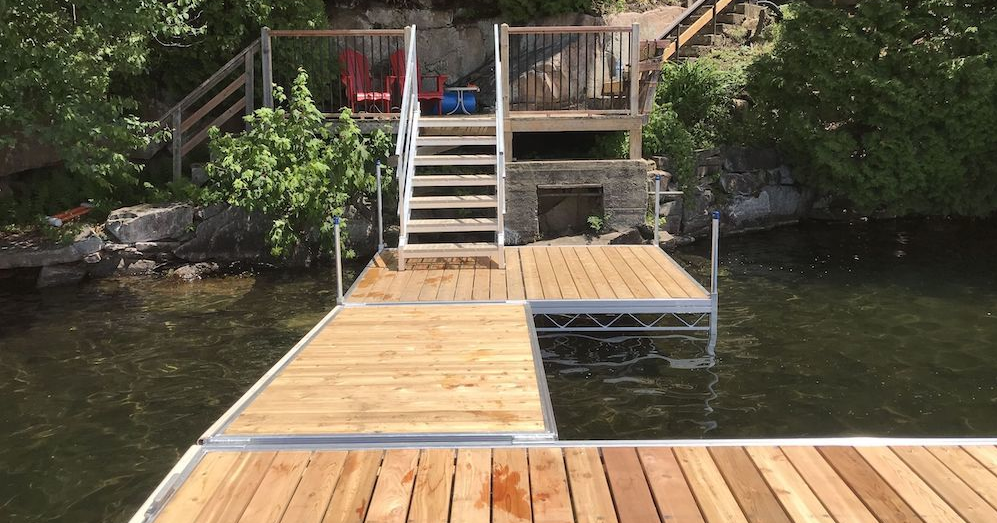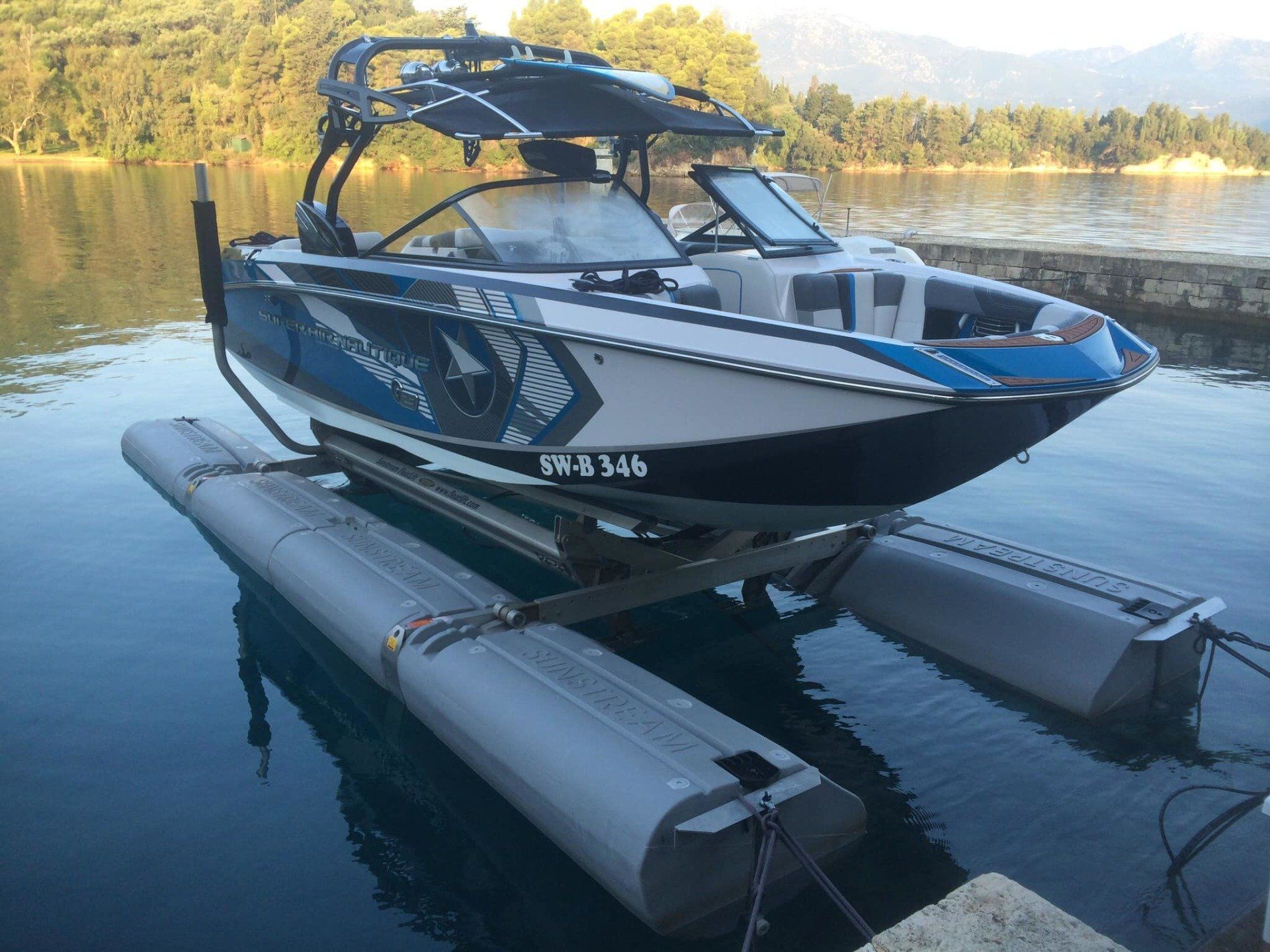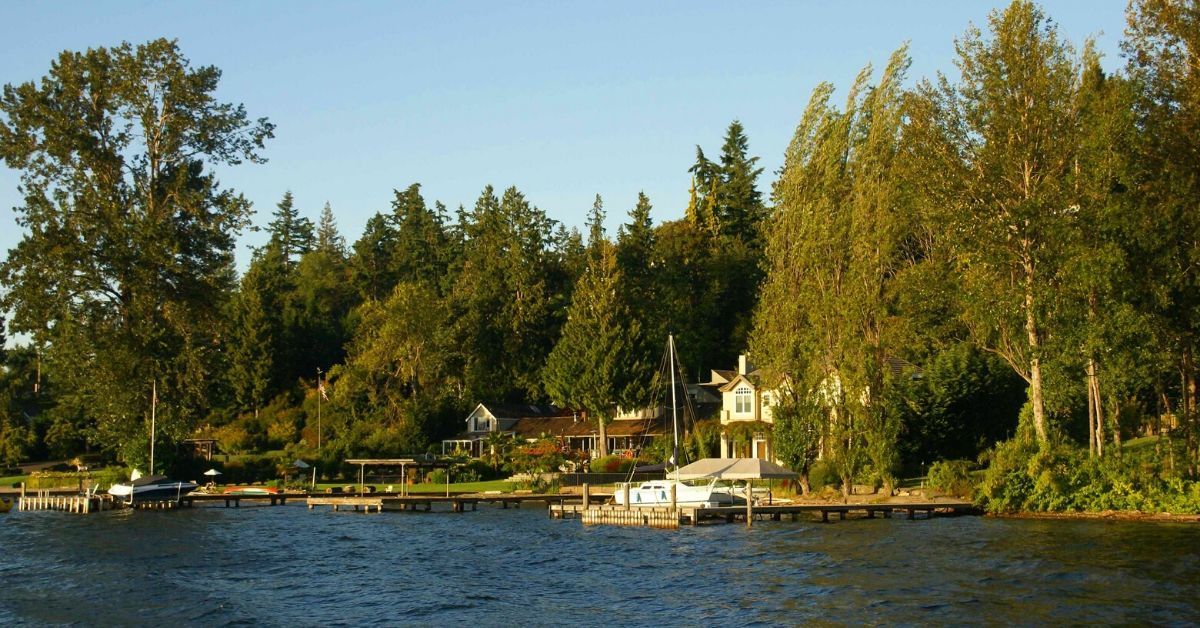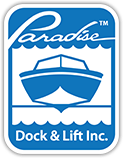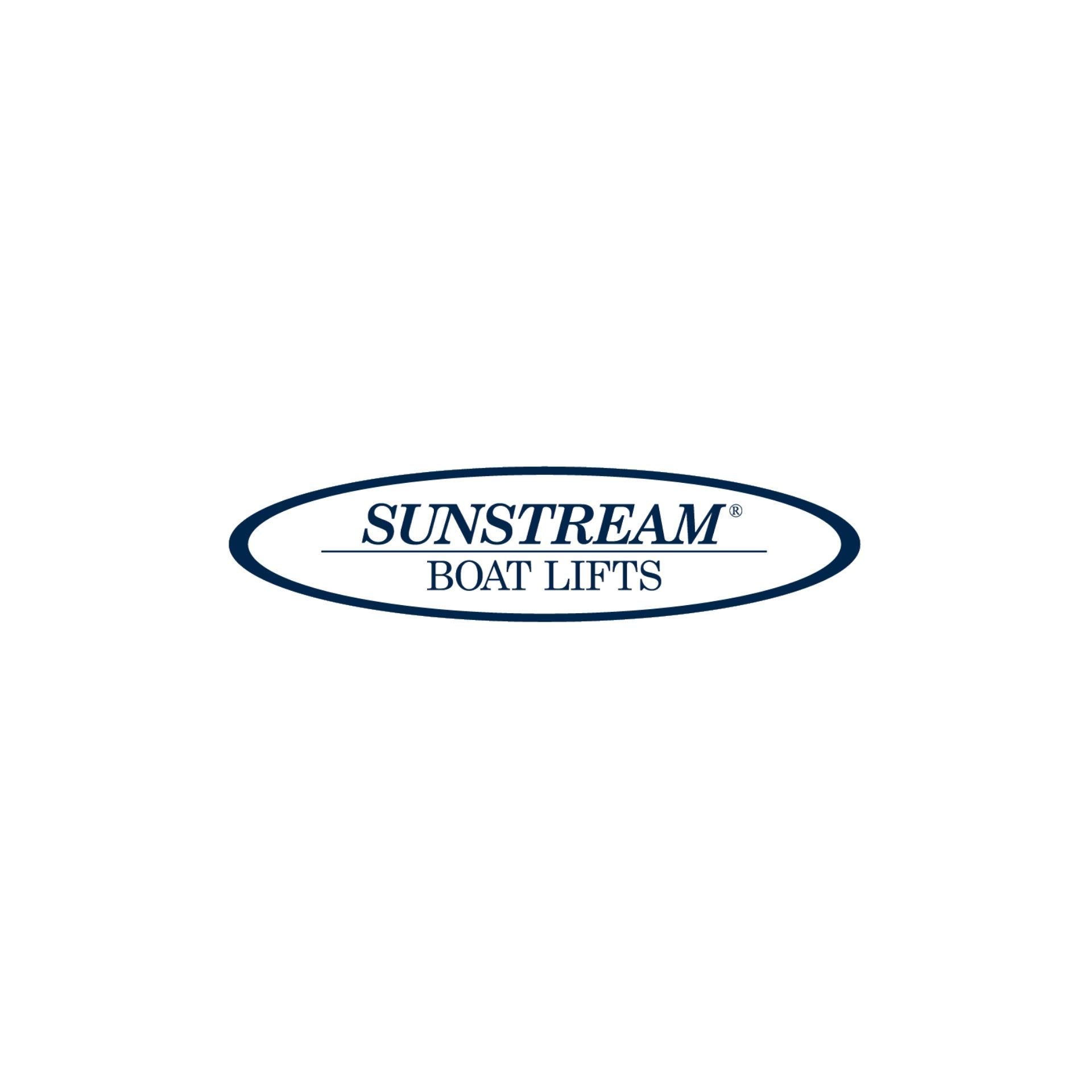How to choose a boating dock that truly fits your needs
Natalie Dzepina • March 15, 2020
A new dock is not only an investment in your home or property, but it’s also an extension of your home.
It can be a place where friends and family gather to enjoy fishing, boating, swimming, and making memories. Whether your property sits on a lake, river, harbour or oceanfront, having a private dock offers a number of advantages to homeowners and businesses alike. Some benefits of owning your own private dock include:
- Convenient access to the water
- No storage or slip fees
- Guaranteed slip availability
- Added security for your watercraft
- Personalized construction and accessories
- Increased property value
- Additional usage for other activities like swimming, fishing, kayaking, socializing with friends, and relaxing
But where to start? Follow our 5-step plan
and you’ll be on your way to choosing a great dock in no time.
Step 1: Analyse your needs
This step may seem rather basic, but thoughtful consideration of environmental and aesthetic features will allow you to create a space that is pleasant and inviting as well as functional.
Here are some questions you should ask yourself:
Where do you plan on putting your dock?
What is the depth of the water and the condition at the bottom?
How many boats will the dock need to accommodate at once?
Are there other types of watercrafts such as kayaks, pedal boats or sea-doos that will use the dock as well?
Will the water level rise and fall drastically, potentially limiting the dock’s usage?
What are the surface conditions of the water? Are you in an area that’s prone to heavy boat traffic or frequent storms?
What is your budget?
How much are you willing to put into maintaining the dock?
Are you planning on installing the dock yourself, or are looking to hire someone to do it for you?
Do you want to use the dock as a place to gather with family and friends?
Whether you’re planning to install a dock in a residential or a commercial space, you should take the time to consider how your dock needs may change with time.
Step 2: Determine your lake’s rules and regulations
Are you aware of the local regulations and restrictions that you will have to meet?
For example, some private lakes, only allow floating docks set on encapsulated foam drums or floats.
Flaunting those restrictions puts you at risk facing a fine, and/or receiving an order to remove the dock. You should also take care that your dock doesn’t block your neighbors’ ability to enjoy the waterfront, too.
For a new private dock, most homeowners associations will usually require that you submit an application in order to obtain a permit allowing you to build a private dock on your lakefront property. You’ll also be required to pay a fee for that permit. Keep in mind that your local municipality may dictate what size dock you can build.
Once you’ve decided on the location, type, and size of your dock, talk to your local building officials about which permits you need and from which regulators. Some of the restrictions and requirements you may come across include:
- Avoiding damage to the ecosystem (you’ll often be restricted from removing any aquatic vegetation or excavating any bed material in order to clear a path for your dock)
- Blocking public access (if your home is near the public part of a lake)
- The location of the dock (private docks are usually required to be built perpendicular to the shoreline in order to maximize the offsets from any neighboring properties)
- The length of the dock
- Free-flowing water requirements (under the dock)
- Material requirements
- Etc.
Working with professionals to help you choose and install your dock will ensure you avoid any issues.
Step 3: Picking the right type of dock
There are essentially two types of docks: Floating docks and Stationary docks.
Floating docks
Floating docks are large platforms often comprised of decking placed over airtight drums, that float on the water’s surface. They also come as pre-built sections that can be attached in a variety of configurations and shapes.
Stationary docks
A stationary dock is a stable solution that can be used as an extension of your property for a variety of occasions such as family gatherings, evenings with friends, and other social events you host at home. Stationary docks are very stable and strong, making them solid option.
For additional information on the types of docks, you can refer to this article.
Step 4: Choosing accessories
Consider what accessories the dock manufacturer offers such as furniture, bumpers, ladders and steps, so you can fully enjoy your dock. Plush options include space-saving table and chair sets that mount on the side of docks. 3-piece furniture, steps, fishing pole holders and canoe/kayak rack – things to help people spend quality time on their docks.
There are many ways to customize your boating dock. Whether you want to make it family-friendly or use it for fishing and mooring other items (such as sea-doos or kayaks), options are available.
Step 5: Installation and Maintenance - How much are you willing to do yourself?
Before you purchase, consider installation and maintenance. MultiKit has well-equipped crews that will put in and take out your dock every season, for a price of course.
Maintenance is yet another consideration. Plastic docks require an occasional power wash or scrubbing with a brush. How involved the maintenance of a fixed dock can be depends on its size, complexity and construction material. Wood decking, for instance will need fresh stain periodically.
Homeowners that already have some handyman skills may be able to build their own dock if it's a smaller floating dock. However, building a dock isn't an easy process, especially if you don't have experience with waterfront structures.
More often than not, the best route is to hire a professional. Although it may cost you a bit more upfront, you'll have the peace of mind knowing that your dock is secure and properly built.
What about the environment?
These days most docks are environmentally friendly. The only thing that homeowners really need to be concerned about is the type of materials used for their docks. Pressure-treated decking is not recommended for water contact situations. Cedar, aluminum or PVC decking is considered to be the best.
Multikit takes the impact of any docks and lift installed on the environment very seriously. We take tremendous precautions when working in sensible ecosystem environments such as water fronts.
Finally, if you’re building a floating dock, avoid using barrels for flotation unless you are able to verify that their original contents were not hazardous to a waterfront environment.
__________________________________________________________
About MultiKit
Multikit was borne out of the fusion of several passions: wakeboarding, wakesurfing, boating and construction. If you're a water sports enthusiast, you know how important it is to moor your boat and we understand you.
For more than 20 years, we have carried out hundreds of dock projects of all kinds and for all types of boats for residential applications as well as for marinas. We are passionate about our work and we are only satisfied when you are. Boating is a passion and our expertise in designing systems and installing your docks is our business.
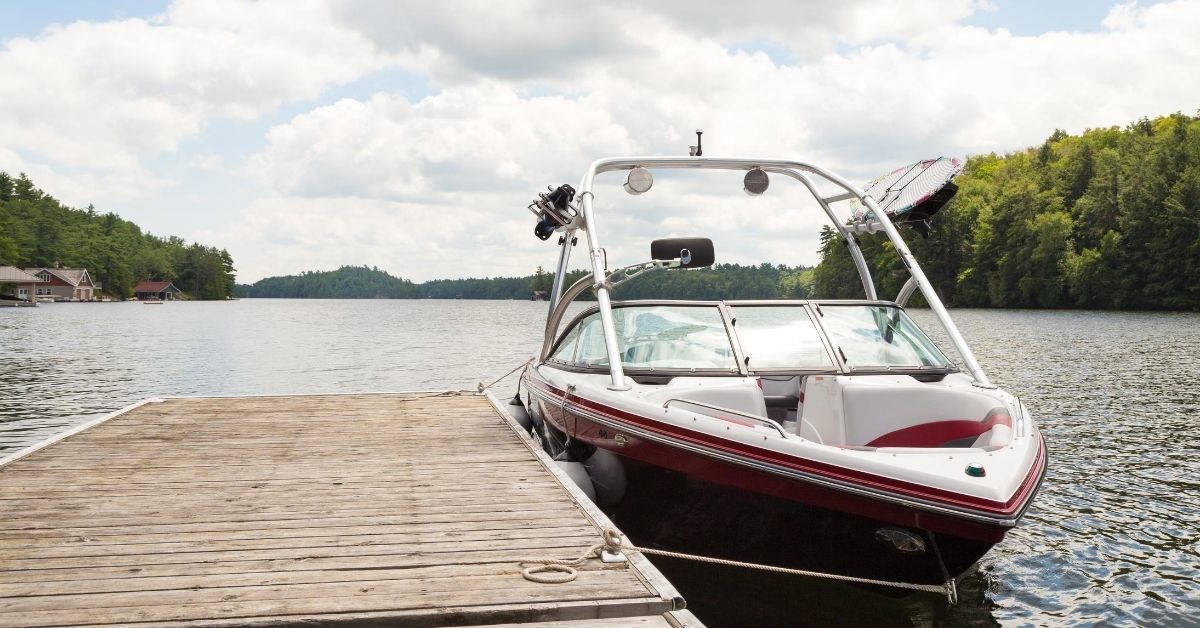
#1 - Nettoyez le souvent En nettoyant votre quai sous pression une fois par mois, vous vous assurerez d’enlever toute saleté et débris. Vous ne voulez pas le nettoyer trop fort (le maintien de l’intégrité de la surface est crucial), alors pensez à engager un professionnel pour s’occuper de cela chaque mois ou chaque fois que cela vous convient le mieux. #2 - Prenez des photos une fois par mois Pas besoin d’équipement professionnel. Sortez votre téléphone intelligent et prenez quelques photos de votre quai sous différents angles chaque mois. Comparez vos nouvelles photos à celles des mois précédents. Vous êtes plus susceptible de remarquer des changements ou des signaux d'alarme sur les images et vous pouvez régler les problèmes à l'avance. #3 - Planifiez vos inspections de quai régulièrement Nous savons tous que la vie est occupée. Inscrire un rappel dans votre calendrier pour l'entretien du quai une fois par mois signifie que vous aurez le temps d'inspecter, de nettoyer, de prendre des photos, etc.. Vos échelles doivent également être inspectées régulièrement. Prévoyez de résoudre les problèmes dès que possible pour éviter d'autres problèmes. En priorisant une heure pour l’inspection de votre quai, vous serez moins susceptible d'oublier cet entretien. #4 - Protégez les coins et les côtés de votre quai Même si vous êtes un excellent capitaine, un facteur incontrôlable tel que le vent peut tirer le meilleur parti de vous. L'installation de pare-chocs de quai protège à la fois votre bateau et le quai des dommages. Il existe plusieurs styles de pare-chocs et ils contribuent grandement à protéger votre investissement. #5 - La sécurité avant tout! La sécurité est l'un des facteurs les plus importants pour votre quai de bateau. Est-ce que votre quai sera utilisé pour les bains de soleil, la pêche ou les divertissements? Si vous pêchez un jour et que vous prévoyez de vous divertir le lendemain, assurez-vous qu'il ne reste plus d'hameçons ou de cannes à pêche sur votre quai car les gens pourraient se blesser. Il est également important de garder une bouée de sauvetage à portée de main attachée à votre quai en cas d'urgence. Garder votre quai de bateau dans des conditions optimales en suivant ces conseils utiles signifie que vous pourrez profiter d'un quai sûr, fiable et en bon état pour les années à venir! À propos de MultiKit Multikit est le fruit de la fusion de plusieurs passions: le wakeboard, le wakesurf, le nautisme et la construction. Si vous êtes un amateur de sports nautiques, vous savez à quel point l'amarrage de votre embarcation est importante et nous sommes bien placés pour vous comprendre. Depuis plus de 20 ans, nous avons réalisé des centaines de projets de quais de tous genres et pour tous types d'embarcations pour des applications résidentielles et pour des marinas. Nous sommes passionnés par notre travail et nous ne sommes satisfaits que lorsque vous l'êtes. Le nautisme est une passion et notre expertise en conception de systèmes et d'installation de vos quais, c'est notre affaire.
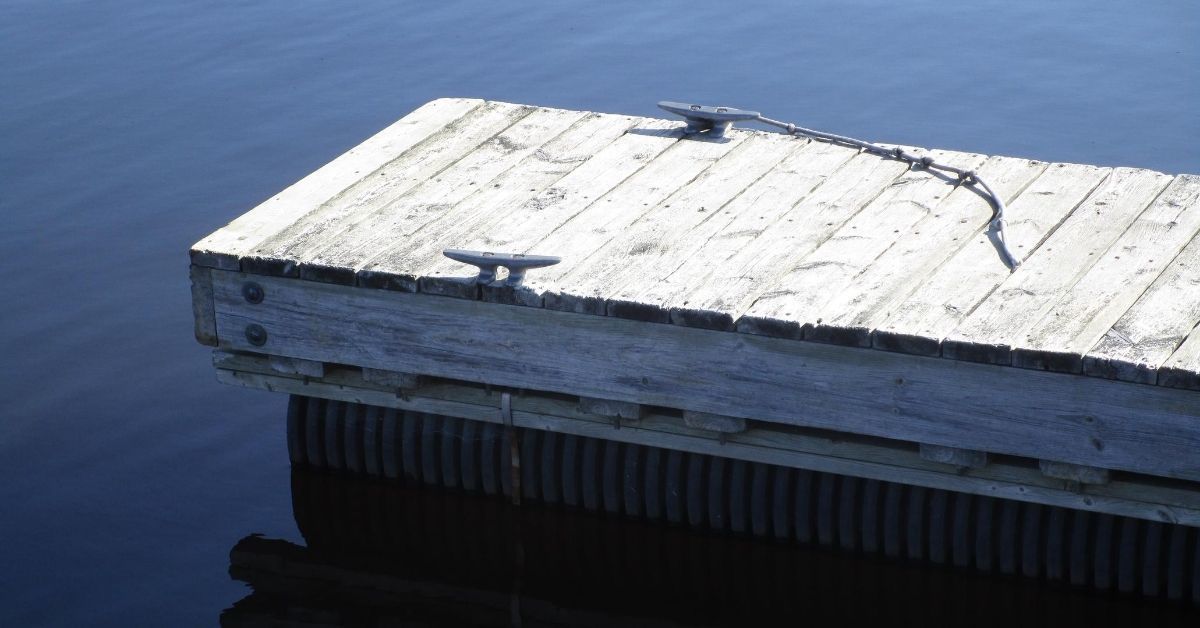
Cela dit, tout dépend du type de quai recherché, alors explorons les deux options. Un quai peut être simple et relativement peu dispendieux, mais il existe aussi des systèmes extrêmement complexes qui coûtent plusieurs milliers de dollars. Le type de quai que vous décidez de construire dépend de votre maniabilité, du type de rivage et de fond de lac auxquels vous êtes confronté et de votre budget. Voici 5 éléments clés à considérer avant de commencer à construire vous-même votre quai de bateau: #1 - Soyez honnête à propos de votre statut de bricoleur Un quai vendu «en kit» peut être une option économique, si vous avez des compétences, beaucoup de temps et un rivage et une profondeur d’eau convenables. Ces kits de bricolage, qui s'assemblent simplement sur le rivage et se mettent presque en place, sont de plus en plus populaires. Si vous n’avez pas confiance en vos compétences de bricoleur ou si vous manquez de temps pour faire le travail, envisagez de faire appel à un professionnel pour concevoir et construire votre quai. Les coûts initiaux liés à l'embauche d'un professionnel seront plus élevés que l'achat de matériaux et de faire la construction vous-même, mais vous récolterez de nombreux avantages, tels qu'un quai construit correctement pendant de nombreuses années, et vous pourrez profiter de vos week-ends au lieu de les passer à mesurer, marteler et percer. #2 - Le fond et la profondeur de votre lac Même si vous êtes un bon bricoleur, certaines limitations peuvent mettre des freins à votre projet. La configuration du fond de votre lac combinée à la disposition de votre rive dictera si vous avez besoin d'aide pour la conception, la disposition et l'installation de votre quai. Un fond de lac sablonneux et plat ne vous causera pas de problèmes. Idem si la variation de profondeur entre le rivage et l'extrémité de votre quai est faible. La plupart des ensembles de quais préfaits ont une capacité de réglage suffisante pour s'adapter à cela. Cependant, si le fond de votre lac est rocheux, ou si la variation entre le rivage et l’endroit où se trouvera la fin du quai est supérieure à quelques mètres, vous devrez peut-être faire appel à des experts. Dans certaines régions, les lacs sont vidés et remplis de temps en temps, vous aurez donc peut-être besoin d'un quai que vous pourrez ajuster régulièrement aux différentes profondeurs. Un quai flottant serait idéal dans cette situation. #3 - Les matériaux et la construction La plupart des ensembles de quais standard ont de l'aluminium (pour les pieds et le cadre) et des matières synthétiques, comme le plastique (pour le matériau de la terrasse). L'utilisation de ces types de matériaux offre certains avantages (par rapport au bois) en termes de durabilité, de résistance et de résistance aux intempéries. Ils sont également faciles à installer et à retirer. Sans système de roues ou sans aide pour transporter la charge, un quai en bois est impossible à installer et à enlever seul. Si vous choisissez un quai en bois, vous devrez vérifier les réglementations locales concernant le traitement chimique et l’environnement; certaines municipalités interdisent l'utilisation de bois traité chimiquement par crainte de contaminer l'eau du lac. Votre matériel doit toujours être galvanisé pour la résistance à la corrosion; si ce n’est pas dans votre budget, choisissez l’acier inoxydable. #4 - La conception et mise en place Le type, la taille, la forme et l'emplacement de votre quai dépendent de la configuration de votre rive et du fond du lac, ainsi que des règles et règlements municipaux. Il est toujours préférable de vérifier auprès de votre municipalité locale quelles sont les réglementations en vigueur, si vous réparez un quai existant ou si vous le remplacez, et surtout si vous prévoyez une extension ou un remplacement complet. Si vous enfreignez certaines règles, vous pourriez être passible d'amendes, ou pire: vous devrez peut-être démolir ce que vous avez construit. Le type de bateau avec lequel vous jouez peut également varier la configuration et la longueur de votre quai. Pour amarrer un bateau plus gros qu’une motomarine ou un esquif de pêche, vous aurez besoin d’au moins quelques pieds de profondeur, ce qui pourrait signifier d’étendre votre quai plus que vous ne le pensiez. Un bateau typique à propulsion arrière a besoin de quelques pieds de profondeur à la poupe pour que le hors-bord ne s'écrase pas sur le fond du lac. Un hors-bord plus léger peut généralement s'en sortir avec moins de profondeur, mais 2 pieds devraient être considérés comme le minimum. Si votre rive est très peu profonde et que les réglementations locales ne vous permettent pas d'étendre le quai, vous devrez peut-être envisager de draguer (enlever les sédiments du fond du lac pour augmenter la profondeur). Il s'agit d'une technique relativement simple, mais en fonction des réglementations locales et des préoccupations environnementales, elle peut devenir assez complexe. #5 - Le quai en hiver Au Canada, la plupart des lacs gèlent, donc il faut penser à la façon d’entretenir votre quai en hiver. De nombreux ensembles de quais sont conçus pour être retirés à l'automne et réinstallés au printemps. Un quai de canalisation doit être retiré, tandis qu'un quai flottant doit être retiré ou déplacé dans un endroit abrité. Le seul quai qui reste en place est un quai permanent qui, de par sa construction, est capable de résister à une certaine accumulation de glace. Cependant, dans une zone où il peut y avoir une plus grande accumulation de glace, il peut être nécessaire d'installer des dégivreurs autour des pieds du quai. Ces dégivreurs font osciller l'eau afin de réduire l'accumulation de glace et d'éviter les dommages. Notre conseil est que lorsqu'il est temps de construire ou de réparer votre quai, ne faites pas cavalier seul. Sans professionnel, votre projet de quai prendra plus de temps et sera beaucoup plus aggravant qu'il ne devrait l'être. À propos de MultiKit Multikit est le fruit de la fusion de plusieurs passions: le wakeboard, le wakesurf, le nautisme et la construction. Si vous êtes un amateur de sports nautiques, vous savez à quel point l'amarrage de votre embarcation est importante et nous sommes bien placés pour vous comprendre. Depuis plus de 20 ans, nous avons réalisé des centaines de projets de quais de tous genres et pour tous types d'embarcations pour des applications résidentielles et pour des marinas. Nous sommes passionnés par notre travail et nous ne sommes satisfaits que lorsque vous l'êtes. Le nautisme est une passion et notre expertise en conception de systèmes et d'installation de vos quais, c'est notre affaire.
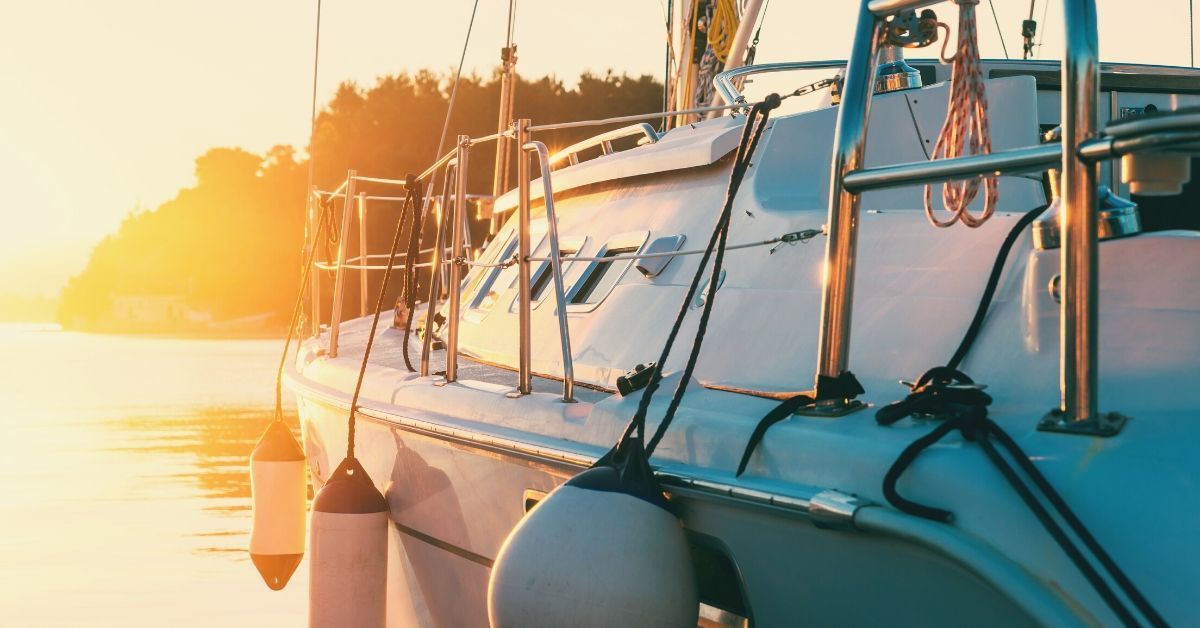
Si vous voulez vous adonner à des activités nautiques, c’est toujours plus pratique d’avoir un bateau. Mais votre équipement le plus important est votre remorque à bateau. Il est essentiel de faire correspondre votre remorque à bateau à votre bateau. Cela dépendra principalement de la taille de votre bateau, mais il y a aussi d'autres considérations à tenir en compte. Quelle est la taille du véhicule que vous utiliserez pour remorquer votre bateau? Il existe des modèles de remorques plus légers qui peuvent accueillir des véhicules moins puissants. Idéalement, vous voudrez un camion à quatre roues motrices qui peut facilement manipuler le bateau et la remorque. Mais si vous n'avez qu'un petit camion, regardez dans une remorque légère en aluminium qui est facilement remorquée par un petit camion. Le type de bateau que vous choisissez dépend également de votre véhicule. La plupart des gens choisissent d'abord leur véhicule puis leur bateau. Si tout ce que vous avez est un petit camion avec peu de puissance, vous ne pourrez pas remorquer un bateau à moteur de 30 pieds derrière vous. La manipulation sera difficile et vous risquez de blesser les autres sur la chaussée si vous ne faites pas attention à ce détail. Une fois que vous avez votre bateau et votre remorque, de quel autre type d’équipement aurez-vous besoin dans vos aventures nautiques? Tout d'abord, vous devrez disposer de tout l'équipement de sécurité requis tel que décrit par la Garde côtière canadienne. Cela comprend un extincteur, des gilets de sauvetage pour toutes les personnes à bord, un certain type d'appareil émettant du son (votre belle-mère ne compte pas) et un éclairage précis pour la navigation de nuit. Cet équipement de navigation est requis par la loi et chaque bateau doit l’avoir. C’est une bonne idée d’équiper votre bateau d’une radio pour pouvoir communiquer avec la rive. À tout le moins, vous devriez avoir un certain type de téléphone portable ou de radio bidirectionnelle en cas d'urgence. Vous pouvez également mettre une chaîne stéréo dans votre bateau pour un plaisir personnel sur l'eau. Pour l'ancrage, vous aurez bien sûr besoin d'une ancre ainsi que d'une ligne pour fixer l'ancre. Vous aurez également besoin d'une ligne d'amarrage pour pouvoir vous amarrer à l'embarcadère. Vous voudrez également que certains pare-chocs de quai évitent d'endommager votre bateau lors de l'amarrage telles des bouées gonflables qui pendent du côté de votre bateau. En ce qui concerne les sports nautiques, l'équipement dont vous avez besoin est assez évident. Si vous allez faire du ski nautique, vous aurez besoin des skis ainsi que d'une corde de remorquage solide. Pour les tubes, procurez-vous un bon tube pouvant contenir plus d'une personne. C’est aussi une bonne idée d’obtenir un tube avec des poignées. Vous aurez également besoin d'une corde de remorquage vers la chambre à air. Si vous vous adonnez à la pêche, votre équipement sera un peu différent. Bien sûr, vous aurez besoin de votre équipement de pêche - cannes, moulinets, appâts, etc. Mais vous aurez également besoin d'un endroit pour garder vos prises comme un puits d'eau ou un seau. Vous devriez également avoir un endroit pour ranger votre équipement lorsqu'il est à bord. Un bon système de navigation est considéré par certaines personnes comme un équipement de navigation essentiel. Vous pouvez trouver un bon système GPS pour peu d'argent, et cela peut vous sauver la vie si vous vous perdez sur l'eau. À tout le moins, vous avez besoin d'une bonne boussole. Il existe littéralement des centaines et des centaines d'articles que les gens considèrent comme des équipements de navigation essentiels. Vous devez choisir ce dont vous avez vraiment besoin et ce que vous devez avoir. L'équipement de navigation de plaisance est disponible dans les magasins d'articles de sport ainsi qu'en ligne, et la variété qui est disponible permettra à votre bateau d'être équipé avec style!

Ils peuvent avoir des fonctionalités très utiles qui vous permettront d’avoir plus de plaisir avec votre quai. Voici 9 des accessoires de quai les plus courants qui vous permettront de profiter au maximum de votre quai. Mobilier de quai Un mobilier de quai élégant et pratique vous permet de profiter de l'eau même si vous n'êtes pas sur votre bateau. Les options de mobilier de quai comprennent: bancs, chaises, tables, parapluies, etc. Vous pouvez généralement choisir différents matériaux et tissus pour personnaliser vos meubles. Taquets Les taquets de quai sont un accessoire très important, car si vous avez un bateau, vous devrez l'attacher. Les taquets de bateau et de quai offrent des emplacements pratiques pour sécuriser les lignes rapidement et facilement. Il existe de nombreux types et dispositions de cales de bateau disponibles pour personnaliser votre expérience d'amarrage. Non seulement les taquets garantissent que l'amarrage et le désamarrage seront manœuvrés en toute sécurité, mais ils garantissent également que vos embarcations restent aussi stable que possible pendant l’embarquement et le débarquement des passagers. Une ligne de quai lâche peut permettre au bateau de se balancer plus loin du quai et créer une situation dangereuse pour l'embarquement. Pare-chocs Les pare-chocs sont également un must car ils offrent une protection contre les chocs pour votre bateau et votre quai. Les pare-chocs les plus courants sont des pare-chocs verticaux solides qui peuvent être ajustés à vos besoins. La partie la plus difficile de l'installation de pare-chocs est de savoir où les placer. Ils doivent être installés là où l'impact le plus fort se produira. Ils sont un excellent accessoire car ils améliorent l'apparence de votre quai et vous aident à économiser de l'argent sur les réparations des quais et des bateaux. Lumières solaires Ajouter des lumières à chargement solaire à votre quai lui donnera vie la nuit et sécurisera l'utilisation de votre quai après le coucher du soleil. En plaçant des lumières le long du périmètre de votre quai, vous renforcez la sécurité de votre quai dans l'obscurité. Échelles Si vous aimez nager depuis votre quai, une échelle vous permettra de profiter pleinement de votre quai en toute sécurité. Certaines échelles ont même des accessoires rabattables, ce qui signifie que vous pouvez les retirer de l'eau lorsque vous ne les utilisez pas. Il est utile car il garde vos marches propres et ajoute des années à la durée de vie de l'échelle. Boîtes de quai Si vous utilisez votre quai pour pêcher, avec des jouets pour profiter de l'eau ou simplement pour relaxer, une boîte de quai est un excellent moyen de garder tout ce dont vous avez besoin à proximité. Pensez aux cannes à pêche, aux gilets de sauvetage et à tous les autres articles que vous utilisez sur l'eau. Au lieu de les transporter du cabanon ou de la maison, ils sont juste là dans votre coffre. Tuyaux d’arrosage Les tuyaux vous permettront d'arroser votre bateau et votre quai après la pêche ou le travail. Ils peuvent également être pratiques en cas d'incendie. Élévateurs de bateaux Les élévateurs de bateaux sortent votre bateau hors de l'eau, offrant un soutien et une protection contre le vent, les vagues, etc. Plus important encore, cela vous donne la tranquillité d’esprit lorsque vous vous absentez de votre chalet pendant une période prolongée. Pour en savoir plus sur les élévateurs de bateaux, lisez notre article intitulé Pourquoi un élévateur de bateau est-il un bon investissement? Système de son Si vous aimez utiliser votre quai comme plate-forme pour profiter de votre lac, un système d'enceintes sonores d'extérieur est parfait pour pêcher, nager ou relaxer sur votre quai. Les derniers modèles sont équipés de Bluetooth pour l'intégration des téléphones intelligents et de plusieurs haut-parleurs pour les grandes installations. Assurez-vous de choisir une marque d'enceintes connue pour une utilisation avec des applications extérieures. Cela aidera votre unité à durer plus longtemps et à protéger vos invités.
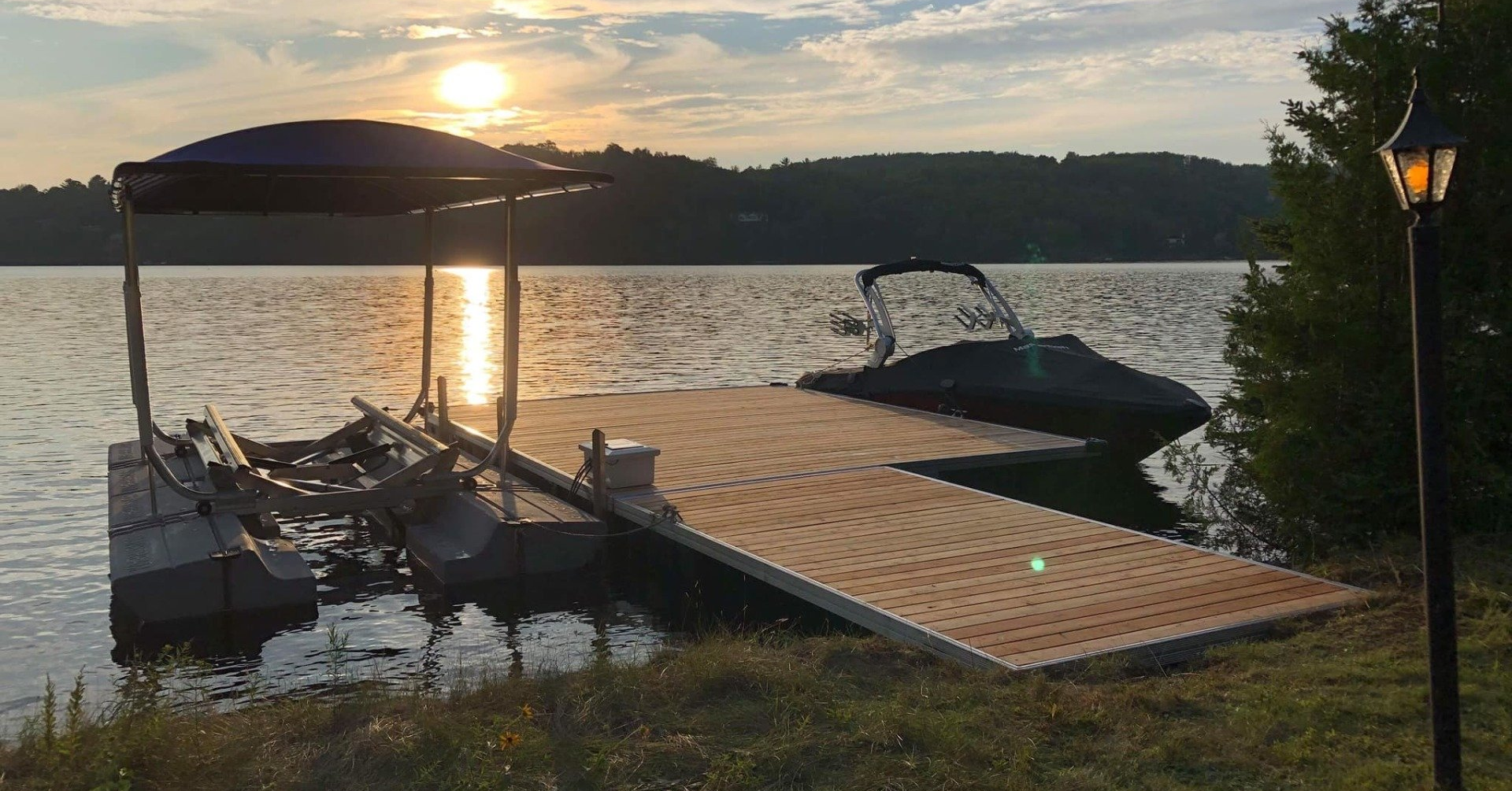
Un nouveau quai n'est pas seulement un investissement pour propriété, c'est aussi une extension de votre maison. Un quai peut être un endroit où les amis et la famille se réunissent pour profiter de la pêche, du canotage, de la natation et pour créer de nouveaux souvenirs agréables. Mais comment choisir? Suivez notre plan en 5 étapes et vous serez sur le point de choisir un excellent quai en un rien de temps.


